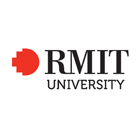Master of Photography
- Home
- Courses
- RMIT University (Royal Melbourne Institute of Technology University)
- Master of Photography
Master of Photography
The Master of Photography enables socially engaged photographers to lead developments in the technological, cultural, environmental and political role of photography today. Utilising a dynamic studio-based learning and independent project environment, this degree encourages you to experiment and take creative risks before mastering your own process and craft. You will…
Categories
COURSE DESCRIPTION
The Master of Photography enables socially engaged photographers to lead developments in the technological, cultural, environmental and political role of photography today.
Utilising a dynamic studio-based learning and independent project environment, this degree encourages you to experiment and take creative risks before mastering your own process and craft.
You will develop skills and knowledge through a combination of practice-led research and professional development opportunities. You will establish and define your photography practice to be industry ready for presentation, publication or for commercial markets. The capstone experience of this degree is a major photographic project that is publicly presented for critical review.
The Master of Photography is designed to challenge you to apply and analyse photographic theory, mediate the relationship between technology and image making, and foster new approaches to writing, practicing, and exhibiting photography.
Career
The Master of Photography will prepare you for work or further research in the photographic industry.
Graduates will have advanced and specialised knowledge and skills in photographic communication and practice. You will be able to independently create photographic works for professional presentation and communicate your ideas effectively in a range of contexts.
Postgraduate qualifications are desirable in the global market. Graduate will be more competitive in securing roles in museums, galleries, government institutes, education, community organisations and private sector organisations.
Pathway options
You are guaranteed entry to the Master of Photography when you successfully complete the following RMIT programs:
Bachelor of Arts (Photography) (Honours) – you will receive 2 semesters of credit (equivalent to 96 credit points)
Bachelor of Arts (Photography) – you will receive 1 semester of credit (equivalent to 48 credit points)
Further study
Upon successful completion of this degree, you may be eligible for entry into an RMIT Masters by Research or Doctoral (PhD) program.
EDUCATIONAL INSTITUTION
Since its establishment in 1887, Royal Melbourne Institute of Technology University (RMIT) has been meeting the needs of the community surrounding it. Originally a Working Men’s College, RMIT showed its flexibility during World War Two, training over 20,000 servicemen in communications to help with the war effort.Now, it is a true pioneer in international education, championing cross-border study opportunities with campuses in various countries. Granted formal university status in 1992, RMIT is ranked 21st in the world for universities that are less than 50 years old.RMIT is the largest higher education institution in Australia, currently with more than 82,000 students. With nearly 20% of those students coming from overseas, it is a university that truly welcomes diversity and is a melting pot of different cultures. RMIT has three campuses in Vietnam, a European hub in Barcelona, an office in Indonesia, and partners with 200+ institutions in 42 countries to provide study opportunities worldwide.
Since its establishment in 1887, Royal Melbourne Institute of Technology University (RMIT) has been meeting the needs of the community surrounding it. Originally a Working Men’s College, RMIT showed its flexibility during World War Two, training over 20,000 servicemen in communications to help with the war effort.
Now, it is a true pioneer in international education, championing cross-border study opportunities with campuses in various countries. Granted formal university status in 1992, RMIT is ranked 21st in the world for universities that are less than 50 years old.
RMIT is the largest higher education institution in Australia, currently with more than 82,000 students. With nearly 20% of those students coming from overseas, it is a university that truly welcomes diversity and is a melting pot of different cultures. RMIT has three campuses in Vietnam, a European hub in Barcelona, an office in Indonesia, and partners with 200+ institutions in 42 countries to provide study opportunities worldwide.




